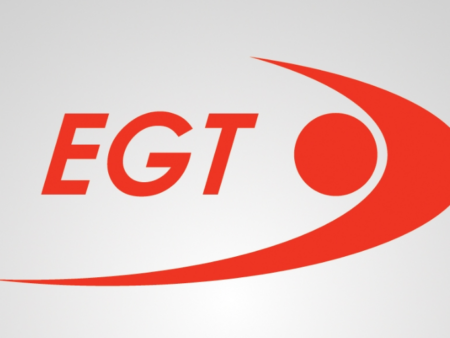As a casino enthusiast, I have always been intrigued by the concept of Return to Player (RTP) and how it impacts both players and casinos. RTP is a crucial factor in determining the long-term profitability of a casino game, and understanding it can help you make informed decisions while playing. In this ultimate guide, I will delve into the intricacies of RTP, its calculation, and the benefits and challenges it poses for both players and casinos.
200 Free Spins
Bonus for New Players
First deposit only. Min. $/€ 20 deposit. 35X wagering requirement. T&Cs apply.
3000 EUR and 300 Free Spins Bonus
Bonus for New Players
First deposit only. Min. $/€ 10 deposit. 40X wagering requirement. T&Cs apply.
100 $/€ + 100 Free Spins
Bonus for New Players
First deposit only. Min. $/€ 20 deposit. 25X wagering requirement. T&Cs apply.
What is RTP?
RTP, or Return to Player, is a percentage value that indicates the average amount of money a player can expect to win back from casino games over its lifespan. For instance, a game with an RTP of 96% means that for every $100 wagered, the player can expect to win back $96. The remaining $4 represents the house edge, which is the profit margin for the casino.
How Return to Player is calculated?
The calculation of RTP involves statistical analysis of a large sample size of game outcomes. The more extensive the sample size, the more accurate the RTP value. For instance, a game with a sample size of 10,000 outcomes will have a more precise RTP value than a game with 100 outcomes.
The formula for calculating RTP is straightforward. It involves dividing the total amount of money wagered by the total amount of money returned to players as winnings. For example, if a game has a total wager of $1,000,000 and pays out $960,000 in winnings, the RTP would be 96%.
It is essential to note that RTP is not a guarantee of winning, and the actual results can vary widely from the RTP value. RTP only indicates the long-term profitability of a game.
The benefits of RTP for players
One of the significant benefits of RTP for players is that it enables them to make informed decisions. RTP values are usually publicly available, and players can use them to compare different slots and choose the ones with the highest RTP values. This can increase their chances of winning and reduce their losses in the long run.
Moreover, RTP can also serve as an indicator of the fairness of online pokies. Games with higher RTP values are generally considered more fair and equitable since they offer players a better chance of winning.
The challenges of RTP for players
While RTP can be a useful tool for players, it can also pose several challenges. The most significant challenge is that it only indicates the long-term profitability of a game and does not guarantee individual results. Players may still experience significant losses in the short term, even when playing games with high RTP values.
Another challenge is that RTP values do not account for the variance of a game. Some games may have high RTP values but also high volatility, meaning that players may experience significant swings in their winnings. This can make it challenging for players to predict their results accurately.
The benefits of RTP for casinos
For casinos, RTP is a crucial factor in determining the long-term profitability of a game. Games with higher RTP values tend to attract more players and generate more revenue over their lifespan. Moreover, games with high RTP values are also more likely to retain players for longer since they offer a more enjoyable gaming experience.
Another benefit of RTP for OK casinos is that it can help them build trust and credibility with players. Games with high RTP values are generally considered more fair and equitable, and casinos that offer them are more likely to attract loyal customers.
The challenges of RTP for casinos
While RTP can be beneficial for casinos, it can also pose several challenges. The most significant challenge is that offering games with high RTP values can reduce the casino’s profit margin. Since the RTP value represents the average amount of money returned to players as winnings, games with high RTP values also have lower house edges, reducing the casino’s profitability.
Another challenge is that offering games with high RTP values can attract professional gamblers who specialize in playing games with positive expected value (EV). These players can exploit the high RTP values and significantly reduce the casino’s profitability.
RTP vs. House Edge
RTP and House Edge are two sides of the same coin. While RTP represents the average amount of money returned to players as winnings, House Edge represents the average amount of money that the casino expects to retain over a game’s lifespan.
For instance, a game with an RTP of 96% has a House Edge of 4%. This means that for every $100 wagered, the casino expects to retain $4 as profit. The House Edge is the inverse of RTP and represents the casino’s profit margin.
Strategies for playing RTP games
Playing games with high RTP values can increase your chances of winning and reduce your losses in the long run. However, it is essential to keep in mind that RTP only indicates the long-term profitability of a game and does not guarantee individual results.
One strategy for playing RTP games is to start with small bets and gradually increase them as you win. This can help you maximize your winnings while minimizing your losses. Another strategy is to choose games with low volatility since they offer a more predictable gaming experience.
Top RTP games to play
There are several games with high RTP values that you can play to increase your chances of winning. Some of the top RTP games include:
- Blackjack (99.5%)
- Video Poker (99.2%)
- Baccarat (98.9%)
- Craps (98.6%)
- Roulette (97.3%)
Conclusion
RTP is a crucial factor in determining the long-term profitability of a casino game. It enables players to make informed decisions and helps casinos attract and retain loyal customers. While RTP can pose several challenges, understanding it can help you make the most of your gaming experience. By playing games with high RTP values and using effective strategies, you can increase your chances of winning and minimize your losses.



















